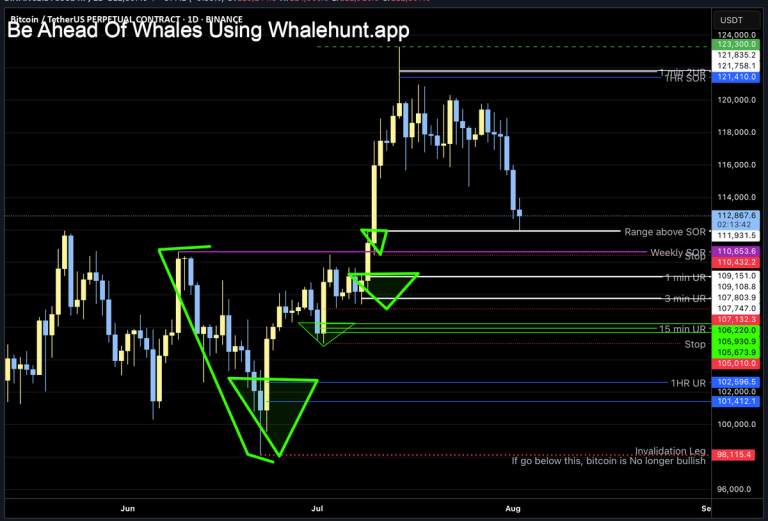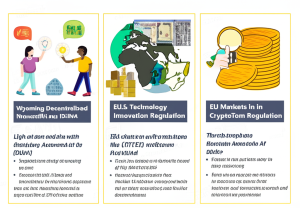
The Emergence of AI-Powered Algorithmic Trading in Bitcoin Markets: A Comprehensive Analysis
—
Introduction: The New Frontier of Bitcoin Trading
In recent years, the rapid development of AI technology has revolutionized various industries, and cryptocurrency trading is no exception. The idea of an AI-powered algorithmic trading partner for Bitcoin—integrating everything from fundamental and sentiment analysis to market structure strategies—may sound like a fairy tale come true for Bitcoin enthusiasts and “BitcoinDegen” traders alike. With Bitcoin surging past notable price milestones and ecosystem expansions intensifying, the integration of AI in trading is becoming a game-changer. This report offers an in-depth analysis of the current Bitcoin market landscape, the role AI plays in transforming Bitcoin trading, and what the future might hold for those embracing these cutting-edge tools.
—
The Bitcoin Market: Current Climate and Dynamics
Bitcoin’s price has recently experienced notable volatility, with sharp upward movements punctuated by brief corrections—a pattern traditional traders recognize but AI algorithms can exploit for optimized returns.
– Price Action and Key Levels: As of mid-2025, Bitcoin’s price fluctuates around $104,000 – $106,000, with resistance forming near $112,000, and support around $96,000. Analysts report patterns such as descending triangles, cup-and-handle formations, and Fibonacci retracements playing pivotal roles in short-term and long-term forecasting. For instance, the daily chart’s cup and handle pattern signals potential breakouts that could push prices above $130,000 [1],[2].
– Market Sentiment: Sentiment analysis gleaned from social media platforms like Reddit and Twitter reveals a growing bullish optimism among retail and institutional traders. Positive social signals detected through off-chain analysis mention increased discussion volumes, bullish phrases, and sentiment momentum—elements critical for algorithmic models incorporating human behavior [3].
– Technical Indicators: On shorter timeframes, technical indicators like RSI (Relative Strength Index) hover near neutral to slightly bearish levels, while MACD (Moving Average Convergence Divergence) shows signs of weakness below trading averages, indicating resistance challenges ahead. However, supportive trends are underscored by the Ichimoku Cloud acting as a significant support zone, suggesting a nuanced interplay between bullish momentum and structural resistance [4],[5].
—
Algorithmic Trading: From Data Scraping to Strategic Execution
At the core of the AI trading partner concept lies the comprehensive use of data-driven methods:
– Fundamental and Sentiment Analysis Integration: An AI partner can scrape news sites, forums, and social media to capture real-time sentiment shifts and fundamental news impacting Bitcoin. The rapid assimilation of this unstructured data enables the AI to predict potential catalysts for price moves before traditional traders react.
– Market Structure Modeling: Understanding the nuances of market microstructure—order books depth, liquidity, volume spikes—allows AI algorithms to time entries and exits with greater precision. AI models can detect repeating patterns (like weekend nonlinear price surges) and automatically adjust risk parameters accordingly [6].
– Multi-Layered Strategy Deployment: Such AI systems are capable of deploying a portfolio of strategies simultaneously—scalping, swing trading, trend following, and arbitrage—adapting dynamically to changing market conditions. For example, reducing risk exposure during weekends when volatility patterns differ from weekdays, or identifying new opportunities in Bitcoin Layer 2 protocol growth, as collaboration between networks enhances transactional efficiency [7].
—
Advantages of AI-Powered Trading Partners in Bitcoin Markets
– Speed and Scalability: AI algorithms operate 24/7, something human traders cannot replicate. This constant vigilance allows for capturing fleeting opportunities emerging from rapid market shifts typical of crypto markets.
– Emotion-Free Decision Making: Trading decisions are devoid of emotional bias, reducing errors such as panic selling or overexuberance during pumps, which are common in highly speculative assets like Bitcoin.
– Continuous Learning: Modern AI utilizes reinforcement learning and integrated feedback loops, improving its predictive capacity as it accumulates more historical data and feedback from trading outcomes.
– Customizability for Risk Tolerance: Traders can set parameters for risk, capital allocation, and preferred styles. The AI respects these configurations while optimizing strategy execution—a personalized “fairy godmother” accessible on a mobile device, as mentioned by cryptocurrency analyst @0xn0sferatu [8].
—
Challenges and Considerations for AI Integration
Despite the exciting potential, several challenges temper the wholesale adoption of AI algorithmic trading partners:
– Data Quality and Noise: The cryptocurrency market is notorious for noisy data and manipulation attempts via social media hype or misinformation campaigns. AI models must be robust against false signals and designed with strong validation layers.
– Regulatory and Ethical Concerns: Algorithmic trading in crypto spaces still navigates a fluid and often uncertain regulatory landscape. This introduces risks concerning compliance and market fairness, especially as AI-driven trading amplifies volume and velocity.
– Market Impact and Liquidity Issues: Large AI-driven trades can affect liquidity and cause slippage, especially in less liquid altcoins, potentially degrading performance and increasing costs.
– Technical Complexity and Maintenance: Deploying and maintaining AI trading systems require expertise, continuous tuning, and infrastructure investment, potentially limiting accessibility for retail traders unless packaged as easy-to-use services.
—
The Expanding Bitcoin Ecosystem: A New Playground for AI
The rise of Bitcoin Layer 2 solutions and interoperability between networks is providing fresh data streams and trading opportunities. Collaborations such as MerlinLayer2 joining WrappedBTC and coordinating with other blockchain projects demonstrate how decentralized finance (DeFi) innovations create more complex scenarios for AI to navigate, including cross-chain arbitrage and liquidity provision optimization [7].
Moreover, the coalescence of multi-asset analysis—Bitcoin alongside traditional hedges like gold and forex—empowers AI partners to incorporate macroeconomic indicators and hedging strategies, elevating Bitcoin trading beyond isolated, Bitcoin-only approaches [9].
—
Looking Forward: The Future Path of AI in Bitcoin Trading
Anticipated trajectories suggest a burgeoning role for AI not just in trade execution, but in shaping market perception and strategy formulation:
– Hybrid Human-AI Collaboration: While some traders may entrust decisions fully to AI, others might use AI-generated insights to inform human judgment, a synergy enhancing overall effectiveness.
– On-Chain AI Agents: Integration of AI directly on blockchain networks (“OnChainAI”) could facilitate autonomous contract execution and decentralized decision-making, as hinted in emerging industry discourse [10].
– Democratization of Trading Intelligence: As interfaces become more intuitive, AI trading tools will become accessible to broader audiences, shifting the paradigm from sophisticated quant funds to everyday traders empowered by algorithmic partners.
—
Conclusion: A Paradigm Shift in Bitcoin Trading
AI-powered algorithmic trading partners symbolize a transformational shift in how Bitcoin is approached—not merely as a static asset but as an evolving ecosystem where data, sentiment, and strategy intertwine dynamically. While the “fairy godmother on your phone” analogy captures the allure perfectly, the reality embodies a complex, multifaceted technological leap. For Bitcoin traders willing to embrace this synthesis of AI and blockchain, the promise is significant: enhanced precision, reduced emotional pitfalls, and the ability to keep pace with one of the most volatile and exciting markets in the world.
Yet, the journey demands attentiveness to challenges, rigorous validation, and thoughtful risk management. Navigating this frontier is as much an art as a science, and those who master the interplay between human intuition and AI sophistication could well define the next era of Bitcoin trading success.
—
References
[1] Donald Dean: Bitcoin Cup and Handle Pattern Analysis, June 14, 2025.
[2] Dynamite trader: Technical Indicators and Chart Patterns on BTC, June 14, 2025.
[3] Off-Chain Market Sentiment Analysis via Social Media Channels, June 14, 2025.
[4] Dynamite trader: Ichimoku Cloud Support in Descending Triangle, June 14, 2025.
[5] Scorehood AI: Temporary Price Action and Bearish Indicators, June 14, 2025.
[6] Neoweka Trading: Weekend Price Behavior Patterns, June 14, 2025.
[7] Bitcoin Layer 2 Insights on Network Collaborations, June 14, 2025.
[8] Tweet by nosferatu.stx on AI Algorithmic Trading Partner, June 14, 2025.
[9] Trading Different: Bitcoin versus Gold Market Analysis, June 14, 2025.
[10] Discussions on OnChainAI and AI Agents in Crypto, June 14, 2025.
—
Source Links
– nosferatu.stx Tweet on AI Trading Partner
– Dynamite trader BTC Technical Analysis
– Bitcoin Layer 2 Insights Twitter
– Off-Chain Sentiment Analysis
– Trading Different Bitcoin vs Gold Analysis
– Neoweka Trading Weekend Pattern Analysis
—
This analysis underscores the vibrant interplay between AI innovation and the evolving Bitcoin market, presenting both immense opportunities and complex challenges for traders navigating this space in 2025.







